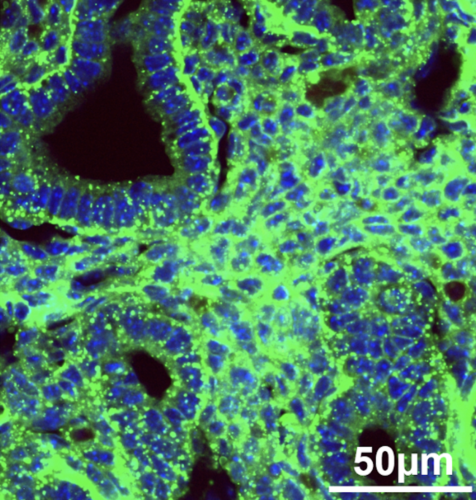Is it possible to treat babies with congenital lung conditions before they are even born? Yale surgeons and biomedical engineers are collaborating on a novel way to use nanoparticles to deliver therapeutic agents to fetuses in utero. Nanoparticles can enhance delivery through a variety of mechanisms, such as protecting drugs until they reach their targets, improving their bioavailability, or enhancing their cellular uptake.
“We were looking at how to optimize targeting the fetal lung using different nanoparticle chemistries, injecting at different gestational time points, and trying several injection methods,” said Sarah Ullrich, the lead author of the study and a general surgery resident at Yale. The study found that to help nanoparticles reach the lungs of fetal mice, delivery via fetal intravenous injection is superior to delivery via the amniotic sac.
Nanoparticles provide a potential solution for one of the diseases Ullrich studies, congenital diaphragmatic hernia. In this condition, the diaphragm does not form properly, resulting in the abdominal organs of a developing fetus being pushed up against the lungs. Many babies born with congenital diaphragmatic hernia need the help of a machine that takes over the normal function of the heart and lungs. “Our goal with that project is to allow the lungs to grow enough to have full function while the baby is in utero, by injecting nanoparticles that deliver therapeutic agents that promote lung growth,” Ullrich said. Knowing the optimal particle type and injection method for maximal fetal lung delivery is therefore essential for this ongoing project.

